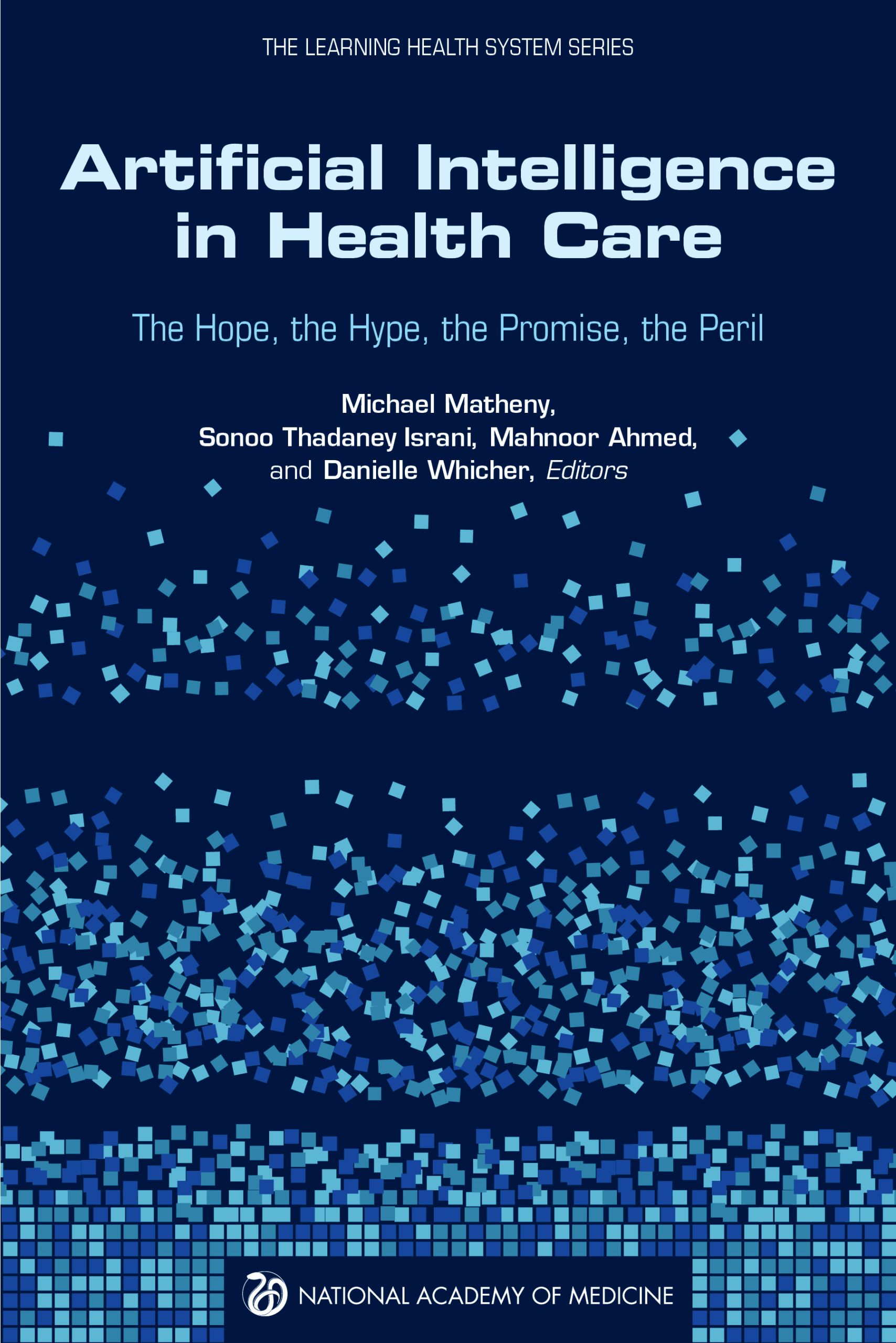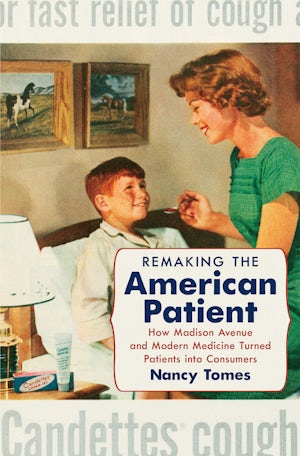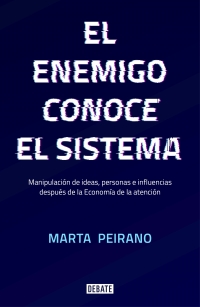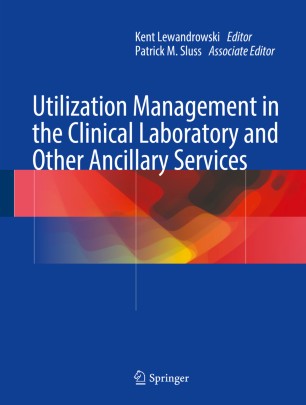As defined by the World Health Organization (WHO), recognition occurs when a regulatory authority accepts the regulatory decision of another authority “as its own decision;”— reliance takes place when a regulatory authority takes into account the work products of another authority (e.g., inspection reports, scientific assessment reports, joint assessment reports produced together with another authority) to help inform the receiving authority's own regulatory decision, which, in the end may differ from the made by the initial authority using the same products.Recognition and reliance are the first steps towards an improvement of real coordination between regulatory bodies. If the pharmaceutical market is global, the regulators should cooperate for a coherent global regulation.
23 de desembre 2019
Global pharmaceutical market vs. local regulators
Regulating Medicines in a Globalized World: The Need for Increased Reliance Among Regulators
22 de desembre 2019
Anchoring and adjusting heuristic
Effect of Teaching Bayesian Methods Using Learning by Concept vs Learning by Example on Medical Students’ Ability to Estimate Probability of a Diagnosis
Why do we need more bayesian reasoning?. Can we improve clinical decision making? The answer in this JAMA article.
Why do we need more bayesian reasoning?. Can we improve clinical decision making? The answer in this JAMA article.
Although bayesian reasoning has been widely promoted in the literature as a diagnostic strategy, there has been scant evidence that teaching bayesian reasoning actually improves diagnostic accuracy. Providing learners with relatively brief instruction on these abstract concepts appeared to significantly improve their diagnostic performance in comparison with simply providing a number of relevant examples or no relevant instruction.
The previously reported discrepancy between human probability estimation and optimal bayesian probability estimation has become traditionally accepted in the psychology and medical literature as cognitive biases, including base-rate neglect, anchoring bias, confirmation bias, and representativeness, all of which suggest suboptimal revision and have been purported to be a primary cause of diagnostic error.13,14 However, on closer scrutiny, much of this evidence was derived from situations that were not representative of the typical diagnostic setting. One highly cited study9 used a screening situation in which the base rate was very low and any positive test result, even one with excellent operating characteristics, would have most likely been a false-positive result. Participants in that study also appeared to exhibit semantic confusion by confusing the posttest probability with the conditional probability that was presented in the problem-solving exercise.
19 de desembre 2019
Medicine as a data science (7)
Artificial Intelligence in Health Care: The Hope, the Hype, the Promise, the Peril
The National Academy of Medicine’s Special Publication: Artificial Intelligence in Health Care: The Hope, The Hype, The Promise, The Peril synthesizes current knowledge to offer a reference document for relevant health care stakeholders such as: AI model developers, clinical implementers, clinicians and patients, regulators, and policy makers, to name a few. It outlines the current and near-term AI solutions; highlights the challenges, limitations, and best practices for AI development, adoption, and maintenance; offers an overview of the legal and regulatory landscape for AI tools designed for health care application; prioritizes the need for equity, inclusion, and a human rights lens for this work; and outlines key considerations for moving forward.A must read
14 de desembre 2019
Pharmaceutical policies
Medicamentos, innovación tecnológica y economía; (2019), nº 160
This issue of Papeles de Economia Española explains the current situation of pharmaceutical policies in Spain. These are the topics:
La industria farmacéutica en la actualidad: un vistazo a sus características
II. LA I+D+I EN LA INDUSTRIA FARMACÉUTICA
La evolución reciente y perspectivas de la innovación
de medicamentos
Ética, medicamentos e innovación
La economía de la I+D en la industria farmacéutica: un resumen
Innovación y competencia en el sector farmacéutico en la época de la medicina de precisión
La innovación y la industria farmacéutica en España
La I+D en el sector farmacéutico español en el período 2003-2015
III. ASPECTOS EMPRESARIALES Y ECONÓMICOS
La evolución de la organización empresarial en la industria farmacéutica
La política de la competencia en la industria farmacéutica
La contribución del sector farmacéutico al crecimiento, a las exportaciones y a la inversión en España
IV. LA PRESTACIÓN FARMACÉUTICA EN LAS COMUNIDADES AUTÓNOMAS
Gestión de la prestación farmacéutica y compras públicas en la Comunidad de Madrid
Procedimiento de selección de medicamentos en atención primaria en Andalucía
La experiencia de gestión de los medicamentos en Cataluña. Objetivos de salud y económicos
V. LA EVALUACIÓN DE LA EFICIENCIA DE LAS INTERVENCIONES Y TECNOLOGÍAS SANITARIAS
La trayectoria metodológica de la evaluación de la eficiencia y su futuro
El valor de las innovaciones médicas
La evaluación de la eficiencia de intervenciones y tecnologías sanitarias en España
VI. LA VISIÓN DEL SECTOR BIOFARMACÉUTICO DESDE LAS EMPRESAS
Industria farmacéutica en España: innovación y compromiso social
El sector de los medicamentos genéricos en España
Medicamentos biosimilares: una oportunidad para el Sistema Nacional de Salud
40 años de autocuidado en España.
Un sector consolidado y emergente
This issue of Papeles de Economia Española explains the current situation of pharmaceutical policies in Spain. These are the topics:
La industria farmacéutica en la actualidad: un vistazo a sus características
II. LA I+D+I EN LA INDUSTRIA FARMACÉUTICA
La evolución reciente y perspectivas de la innovación
de medicamentos
Ética, medicamentos e innovación
La economía de la I+D en la industria farmacéutica: un resumen
Innovación y competencia en el sector farmacéutico en la época de la medicina de precisión
La innovación y la industria farmacéutica en España
La I+D en el sector farmacéutico español en el período 2003-2015
III. ASPECTOS EMPRESARIALES Y ECONÓMICOS
La evolución de la organización empresarial en la industria farmacéutica
La política de la competencia en la industria farmacéutica
La contribución del sector farmacéutico al crecimiento, a las exportaciones y a la inversión en España
IV. LA PRESTACIÓN FARMACÉUTICA EN LAS COMUNIDADES AUTÓNOMAS
Gestión de la prestación farmacéutica y compras públicas en la Comunidad de Madrid
Procedimiento de selección de medicamentos en atención primaria en Andalucía
La experiencia de gestión de los medicamentos en Cataluña. Objetivos de salud y económicos
V. LA EVALUACIÓN DE LA EFICIENCIA DE LAS INTERVENCIONES Y TECNOLOGÍAS SANITARIAS
La trayectoria metodológica de la evaluación de la eficiencia y su futuro
El valor de las innovaciones médicas
La evaluación de la eficiencia de intervenciones y tecnologías sanitarias en España
VI. LA VISIÓN DEL SECTOR BIOFARMACÉUTICO DESDE LAS EMPRESAS
Industria farmacéutica en España: innovación y compromiso social
El sector de los medicamentos genéricos en España
Medicamentos biosimilares: una oportunidad para el Sistema Nacional de Salud
40 años de autocuidado en España.
Un sector consolidado y emergente
12 de desembre 2019
11 de desembre 2019
Laboratory medicine as a data science
Data science, artificial intelligence, and machine learning: Opportunities for laboratory medicine and the value of positive regulation
Jacob Lawrence, This is Harlem, 1943. Gouache and pencil on paper. Hirshhorn Museum and Sculpture Garden, Smithsonian Institution, Gift of Joseph H. Hirshhorn, 1966. Artwork © The Jacob and Gwendolyn Knight Lawrence Foundation, Seattle / Artists Rights Society (ARS), New York; photograph by Cathy Carver
Artificial intelligence (AI) and data science are rapidly developing in healthcare, as is their translation into laboratory medicine.These are the four areas that the authors consider that AI will have impact:
- Processes and care pathways
- Laboratory test ordering and interpretation
- Data mining, early diagnosis, and proactive disease monitoring
- Personalized treatment and clinical trials
Jacob Lawrence, This is Harlem, 1943. Gouache and pencil on paper. Hirshhorn Museum and Sculpture Garden, Smithsonian Institution, Gift of Joseph H. Hirshhorn, 1966. Artwork © The Jacob and Gwendolyn Knight Lawrence Foundation, Seattle / Artists Rights Society (ARS), New York; photograph by Cathy Carver
03 de desembre 2019
The fight between commercialism and professionalism in medicine (3)
The Price We Pay
What Broke American Health Care--and How to Fix It
What Broke American Health Care--and How to Fix It
Health care is perhaps today’s most divisive, territorial political issue. But many of the needed solutions are not partisan; they’re American. We are at a pivotal juncture. Spending on health care threatens every aspect of American society. The time for commonsense reform has arrived. All of us can play a part in driving badly needed reforms, both in the marketplace and in the policy world.
As a society, we should embrace a basic set of patient rights, including a right to obtain a timely quote for a shoppable medical service. Lawmakers should look at the price transparency trails blazed by Florida, New Hampshire, and Maine. The prerequisite of any free market is viewable pricing information—not just inflated charges, but the actual amounts of settled bills. New policies should ensure a level playing field to make the free market functional again, to cut the waste and restore competition to the marketplace.I disagree with the author. Competition it is not the tool for a fairer health care. Wishfull thinking will not drive us to an improvement.
01 de desembre 2019
The fight between commercialism and professionalism in medicine (2)
The Public Creation of the Corporate Health Care System
A second book on the same topic on US healthcare. And the regulatory messages are:
A second book on the same topic on US healthcare. And the regulatory messages are:
Despite the political uproar surrounding the ACA, many citizens, including the legislation's opponents, acknowledged the need for some type of reform. Indeed, ACA antagonists were most effective raising the specter of how federal programming would worsen health care rather than boasting about prevailing arrangements. Poor service distribution, fragmented care, and uneven service quality had long characterized U.S. medicine. But policymakers and voters were primarily concerned about the uninsured and the exorbitant costs that ranked American health care as the world's most expensive. These flaws helped push the ACA over the finish line. And the program has thus far proven resilient, withstanding presidential and congressional contests as well as significant court challenges.Right now it seems that ACA is not enough. Let's wait and see.
The ACA built new rooms atop a defective, jerry-built edifice. The public option would have put the nation firmly on the path toward a nationalized, universal system by creating a government-managed plan and using regulations and mandates to enfeeble and eventually drive out private coverage. Readers can decide for themselves the wisdom of creating a centralized system. Nonetheless, because the ACA failed to secure fundamental, structural reform, it will be unable to rein in costs while also maintaining or improving the quality of care. Indeed, this narrative has illustrated how a fusion of public and private power constructed an institutionally tangled health care system that, even under the banner of comprehensive reform, policymakers were ultimately unable to rescue from the insurance company model.
29 de novembre 2019
The fight between commercialism and professionalism in medicine
Remaking the American Patient
How Madison Avenue and Modern Medicine
Turned Patients into Consumers
I've found this book of interest specially for europeans. Our health systems are currently under pressure. Public budgets are constrained and the private sector is growing. If you want to know what happens next, then this is the book to read. Just to prevent the disaster that comes afterwards, remember that US life expectancy has been declining in the last three years!. Maybe the time to act is now, just to avoid this predictable outcome. Take care.
How Madison Avenue and Modern Medicine
Turned Patients into Consumers
I've found this book of interest specially for europeans. Our health systems are currently under pressure. Public budgets are constrained and the private sector is growing. If you want to know what happens next, then this is the book to read. Just to prevent the disaster that comes afterwards, remember that US life expectancy has been declining in the last three years!. Maybe the time to act is now, just to avoid this predictable outcome. Take care.
28 de novembre 2019
Digital health transformation
Health in the 21st Century
Putting Data to Work for Stronger Health Systems
A new report by OECD highlights the potential digital health environment. We are still far from what they say. However, while reading it you'll be aware of its relevance. Chapter 5 is a must read:
Putting Data to Work for Stronger Health Systems
A new report by OECD highlights the potential digital health environment. We are still far from what they say. However, while reading it you'll be aware of its relevance. Chapter 5 is a must read:
Big data, and big data analytics, can be used at all three levels of health promotion and disease prevention – research, surveillance, and intervention – by:
-Allowing a more precise identification of at-risk populations, through a more comprehensive understanding of human health and disease, including the interaction between genetic, lifestyle, and environmental determinants of health;
-Enabling better surveillance of both communicable and non-communicable diseases; and
- Facilitating better targeted strategies and interventions to improve health promotion and
disease prevention.
21 de novembre 2019
Against the riggers
El enemigo conoce el sistema
Manipulación de ideas, personas e influencias después de la economía de la atención
Manipulación de ideas, personas e influencias después de la economía de la atención
Uno de los errores recurrentes de la izquierda es pensar que el populismo es la estrategia de los imbéciles, cuando la historia demuestra que no puede ser tan imbécil cuando consigue un éxito arrollador. Ya en Los orígenes del totalitarismo, Hannah Arendt explica que este tipo de estrategia está diseñada deliberadamente para desprender a la sociedad educada de sus recursos intelectuales y espirituales, convirtiendo a la población en cínicos o en niños, dependiendo del ego y el aguante de cada uno. Una doctrina del shock que precede a la escuela de Chicago y que ha sido característica de todos los totalitarismos contemporáneos, del nazismo alemán al estalinismo ruso, pasando por el fascismo italiano.En un mundo eternamente cambiante e incomprensible, las masas han llegado hasta el punto de que podrían, al mismo tiempo, creer todo o nada, pensar que todo era posible y que nada era verdad... Los líderes de masas totalitarios basaban su propaganda en la correcta premisa psicológica de que, en esas condiciones, uno podía hacer que la gente creyera la declaración más fantasiosa un día, y saber que si al día siguiente les dieran la prueba irrefutable de su falsedad, encontrarían refugio en el cinismo. En lugar de abandonar a los líderes que les habían mentido, clamarían que supieron en todo momento que la declaración era mentira y admirarían a los líderes por su agudeza táctica superior.
08 de novembre 2019
How much do countries spend on health?
Health at a Glance 2019: OECD Indicators
The european country that spends the most is Switzerland 12,2% over GDP. In Catalonia this figure was 7,6% in 2016 (less than Greece). Per capita income in 2016 was 35% more in Switzerland than in Catalonia, while health expenditure was 60% more in Switzerland. Where have the catalan taxes gone?. You know it and I know it. And everybody is aware that there is only one solution to have the appropriate public health expenditure. We have to say good bye as soon as possible.
The european country that spends the most is Switzerland 12,2% over GDP. In Catalonia this figure was 7,6% in 2016 (less than Greece). Per capita income in 2016 was 35% more in Switzerland than in Catalonia, while health expenditure was 60% more in Switzerland. Where have the catalan taxes gone?. You know it and I know it. And everybody is aware that there is only one solution to have the appropriate public health expenditure. We have to say good bye as soon as possible.
07 de novembre 2019
How to identify lab tests of low effectiveness?
Prevalence and Predictability of Low-Yield Inpatient Laboratory Diagnostic Tests
A new approach to understand the size of useless lab tests is to apply: "regularized logistic regression, regress and round, naive Bayes, neural network multilayer perceptrons, decision tree, random forest, AdaBoost, and XGBoost". This means that machine learning has its own space in laboratory medicine. In the article, they show high level of prediction for useless tests.
A new approach to understand the size of useless lab tests is to apply: "regularized logistic regression, regress and round, naive Bayes, neural network multilayer perceptrons, decision tree, random forest, AdaBoost, and XGBoost". This means that machine learning has its own space in laboratory medicine. In the article, they show high level of prediction for useless tests.
The best performing machine learning models predicted normal results with an AUROC of 0.90 or greater for 12 stand-alone laboratory tests (eg, sodium AUROC, 0.92 [95%CI, 0.91-0.93]; sensitivity, 98%; specificity, 35%; PPV, 66%; NPV, 93%; lactate dehydrogenase AUROC, 0.93 [95%CI, 0.93-0.94]; sensitivity, 96%; specificity, 65%; PPV, 71%; NPV, 95%; and troponin I AUROC, 0.92 [95%CI, 0.91- 0.93]; sensitivity, 88%; specificity, 79%; PPV, 67%; NPV, 93%) and 10 common laboratory test components (eg, hemoglobin AUROC, 0.94 [95%CI, 0.92-0.95]; sensitivity, 99%; specificity, 17%; PPV, 90%; NPV, 81%; creatinine AUROC, 0.96 [95%CI, 0.96-0.97]; sensitivity, 93%; specificity, 83%; PPV, 79%; NPV, 94%; and urea nitrogen AUROC, 0.95 [95%CI, 0.94, 0.96]; sensitivity, 87%; specificity, 89%; PPV, 77%; NPV 94%).This approach goes further than this book:
03 de novembre 2019
It's always about quality
La qualité des services de santé. Un impératif mondial en vue de la couverture santé universelle
Improving healthcare quality in Europe. Characteristics, effectiveness and implementation of different strategies
Improving healthcare quality in Europe. Characteristics, effectiveness and implementation of different strategies
The essential element of access to healthcare overshadows the understanding that better health can only be achieved if accessed services are also of high quality. The Sustainable Development Goals spell this out quite clearly: “Achieve universal health coverage, including financial risk protection, access to quality essential health-care services and access to safe, effective, quality and affordable essential medicines and vaccines for all” (Goal 3, Target 8). Indeed, ensuring that healthcare services are of good quality is an imperative for policy-makers at all levels and an important contributor to health system performance.
Subscriure's a:
Missatges (Atom)



.jpg)






